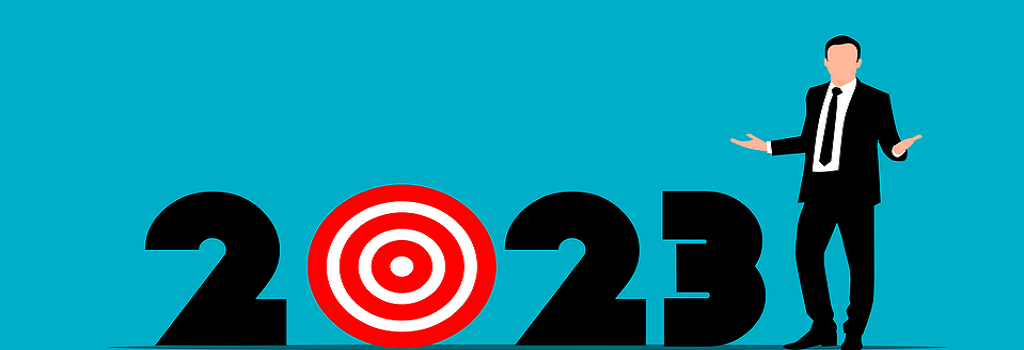
As we approach the end of the calendar year, we are already beginning to see how B2B marketing campaigns will shape up in 2023.
From an audience perspective, changes in B2B prospect behavior will be front and center. The B2B buyer is now younger and more tech native, with 59% of B2B buyers expected to be aged 26-40 years old in 2023 – so this new year we say hello to some new B2B customer personas.
From a business strategy viewpoint, brand building and business outcomes are set to be the B2B professionals’ new year resolution. But as we move through these more unsettled periods of economic uncertainty, CEOs will be expecting to measure growth from marketing campaigns. This will require aligning marketing more closely with other business functions, such as sales and CX to add value for the new B2B prospect.
We’ve done our research from analysts and vendors, and have put together our four marketing switch-ups to cater to the new B2B customer and meet business development demands in 2023:
1. Channel marketing responsibility shifts downstream to herald an end to channel conflict
Forrester predicts that over 40% of B2B organizations will say goodbye to their channel marketing function in 2023. This is due to an increasing focus on organizations forming tighter “partner ecosystems” – where tech leaders concentrate on providing baseline solutions, designed with open APIs and architecture in mind for Partners and Value Added Resellers (VARs) to build new functionality and value on top.
Forrester describes this as “a welcome development, as the continued rise and expansion of partner ecosystems is yet another way that B2B organizations align to buyer needs and preferences in their search for true solutions to their complex business problems.” But with leaders such as IBM, Oracle, SAP, Microsoft, etc, putting less focus on feeding their partners with product-specific marketing, the onus is on the partners and the VARs to drive their own marketing activity.
2. Seasonal demand means seasonal SEO
Like any business, the customers of B2B businesses around this time will start planning budgets and projects for the next year. This creates a surge for certain key search words. We know how important online search has become for the B2B buyer, with 81% of B2B product information now gathered online, so now is the time for B2B organizations to get their SEO in gear.
As prospects are on the hunt for new business solutions, now is prime time to capture new customers. Businesses need to ensure website and social media pages are up-to-date and content is SEO optimized so they can get the right content to the right person at the right stage of the sales funnel.
This SEO focus will also need to translate to social media as well. In our social media predictions for 2023, we highlighted how keyword research looks set to take over hashtagging as the primary form of “social SEO” – so PR and marketing professionals need to don their thinking caps and consider how trending keywords can be woven through social content, rather than slapped on afterwards in hashtag form.
3. Digital channels for digital prospects – you can build trust online
As B2B buyers move online in their searches, B2B marketers must remember to pay attention to their digital channels. LinkedIn is a perfect place to position content for thought leadership, but also to connect your thought leaders and spokespeople more closely with their target audience. The informality and personal touch of social media platforms helps to build more trust with thought leaders – a key to leveraging spokespeople in influencer marketing strategies.
But when it comes to Account Based Marketing (ABM), a wider ABM strategy is required to drive growth, one that targets key accounts that yield the most revenue for the business. ABM is the perfect approach to align marketing with other business functions across multiple digital channels to build strong brand image through personalized and impactful content.
It requires deep collaboration between marketing, PR, and sales to share data on customers and business plans – creating one, united goal to provide value to the prospect at every stage of the buyer journey.
4. B2C influence on B2B content goes viral
Video content is on the rise next year with 78% of content marketers planning to invest in video in 2023, up from 69% the previous year. Video content has been a growing trend for some time and with the shift to favor more digital forms of content, 2023 seems to be the year of the video!
The audio-visual elements of video enhance the B2B customer experience and create the opportunity for content to be repurposed for social media – even into the bite-sized, short-form video content to get your B2B TikTok off the ground! Videos are an easy-to-consume form of content in a digital climate where attention is limited and can be re-watched over and over again, especially when hosted on a webpage or on a social media platform – providing long-term ROI.
B2B business is getting customer-centric and so should B2B marketing
We’re clearly witnessing the push for greater CX and customer-centricity in B2B products and solutions offerings, and now it’s time for marketing to catch up.
In the end, it all comes down to meeting the customer where they are – across a blend of traditional and new touchpoints.
But this requires greater collaboration across the entire business to align marketing with all other business functions and form a united brand goal and voice. By re-evaluating target personas, B2B marketing and PR teams can tailor content and channels to optimize marketing impact and drive growth in 2023.
Elizabeth Quinlan is PR Executive at IBA International.

Leave a comment